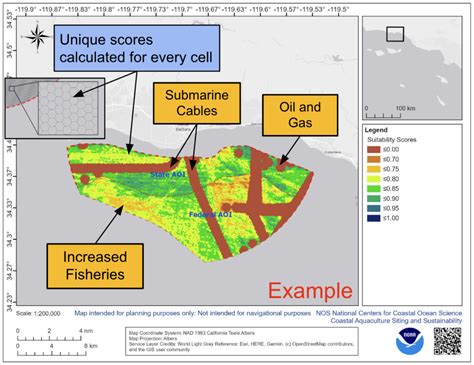Florida’s coastline, stretching over 1,350 miles, is a precious natural resource, home to a diverse array of wildlife, vibrant ecosystems, and thriving coastal communities. However, this idyllic landscape is facing increasing pressure from development, climate change, and other threats. To balance the need for economic growth with the preservation of our coastal heritage, Florida has implemented a comprehensive framework of coastal laws. Understanding these laws is crucial for property owners, developers, and anyone interested in protecting our coastal treasures.

Development and Permitting
Coastal Construction Control Line (CCCL)
Established under the Florida Beach and Shore Preservation Act, the CCCL defines the boundary seaward of which new construction is generally prohibited. The CCCL aims to protect coastal dunes, beaches, and other vulnerable areas from erosion and storm damage. Permits are required for any construction within the CCCL, and strict criteria must be met to minimize environmental impacts.
Special Management Zones (SMZs)
SMZs are designated areas along Florida’s coastline where development is subject to additional regulations. These zones are established to protect sensitive habitats, scenic resources, and historic or archaeological sites. Development within SMZs typically requires a specific permit from the Florida Department of Environmental Protection (DEP).
Beach and Shore Management Plans
Florida’s local governments are required to develop and implement Beach and Shore Management Plans (BSMPs). These plans provide a framework for managing coastal resources, including beach nourishment, erosion control, and infrastructure improvements. BSMPs are reviewed and approved by the DEP and must be consistent with state coastal laws.
Environmental Protection
Coastal Zone Management Act (CZMA)
The CZMA is a federal law that regulates development and activities in the nation’s coastal zone. Florida’s CZMA program is implemented by the DEP and aims to protect coastal ecosystems, water quality, and public access. The CZMA requires federal agencies to consider the impacts of their actions on coastal resources and to ensure consistency with state coastal management plans.
Florida Water Quality Standards
Florida has established stringent water quality standards to protect its coastal waters from pollution. These standards limit the discharge of harmful pollutants into waterways and specify criteria for water quality, such as dissolved oxygen levels and nutrient concentrations. Developers and industries müssen adhere to these standards to prevent water pollution and degradation of coastal habitats.
Endangered Species Act
The Endangered Species Act (ESA) protects threatened and endangered species, including those found in Florida’s coastal ecosystems. The ESA prohibits any action that jeopardizes the continued existence of protected species or their critical habitat. Developers and other parties may need to consult with the U.S. Fish and Wildlife Service or National Marine Fisheries Service to ensure compliance with the ESA.
Public Access
Public Beach and Shoreline Access
Florida law ensures public access to beaches and shorelines, even if they are privately owned. The Public Beach Act of 1985 established a dedicated portion of beach, known as the Public Beach and Shoreline Access Zone (PBSAZ), where the public is entitled to access and recreate.
Coastal Walkways and Greenways
Florida recognizes the importance of public coastal access for recreation and connecting communities. The DEP and local governments have developed a network of coastal walkways and greenways, providing safe and scenic pathways along the shoreline. These trails promote exercise, tourism, and appreciation of coastal resources.
Conclusion
Florida’s coastal laws are a vital framework for balancing economic development with environmental protection. By adhering to these laws, property owners, developers, and government agencies can contribute to the preservation of Florida’s coastline for generations to come. Understanding and complying with coastal laws is essential for ensuring the sustainable management of our precious coastal treasures.
FAQs
1. What is the purpose of the Coastal Construction Control Line (CCCL)?
A: To protect coastal dunes, beaches, and vulnerable areas from erosion and storm damage.
2. What activities are regulated under the Coastal Zone Management Act (CZMA)?
A: Development and activities that impact coastal ecosystems, water quality, and public access.
3. How does Florida ensure public access to beaches and shorelines?
A: Through the Public Beach and Shoreline Access Zone (PBSAZ), which dedicates a portion of beach for public use.
4. Why are Coastal Walkways and Greenways important?
A: They provide public access for recreation, promote exercise, and connect communities along the shoreline.
5. What is the penalty for violating Florida’s coastal laws?
A: Violations can result in fines, permit revocation, or criminal charges.
6. Who is responsible for enforcing Florida’s coastal laws?
A: The Florida Department of Environmental Protection (DEP), local governments, and state attorneys general.
7. How can I learn more about Florida’s coastal laws?
A: Contact the DEP, visit the Florida Coastal Management Program website, or consult with an environmental lawyer.
8. What is the future of Florida’s coastal laws?
A: As sea levels rise and coastal communities face new challenges, it is likely that Florida’s coastal laws will continue to evolve to address emerging needs and threats.
